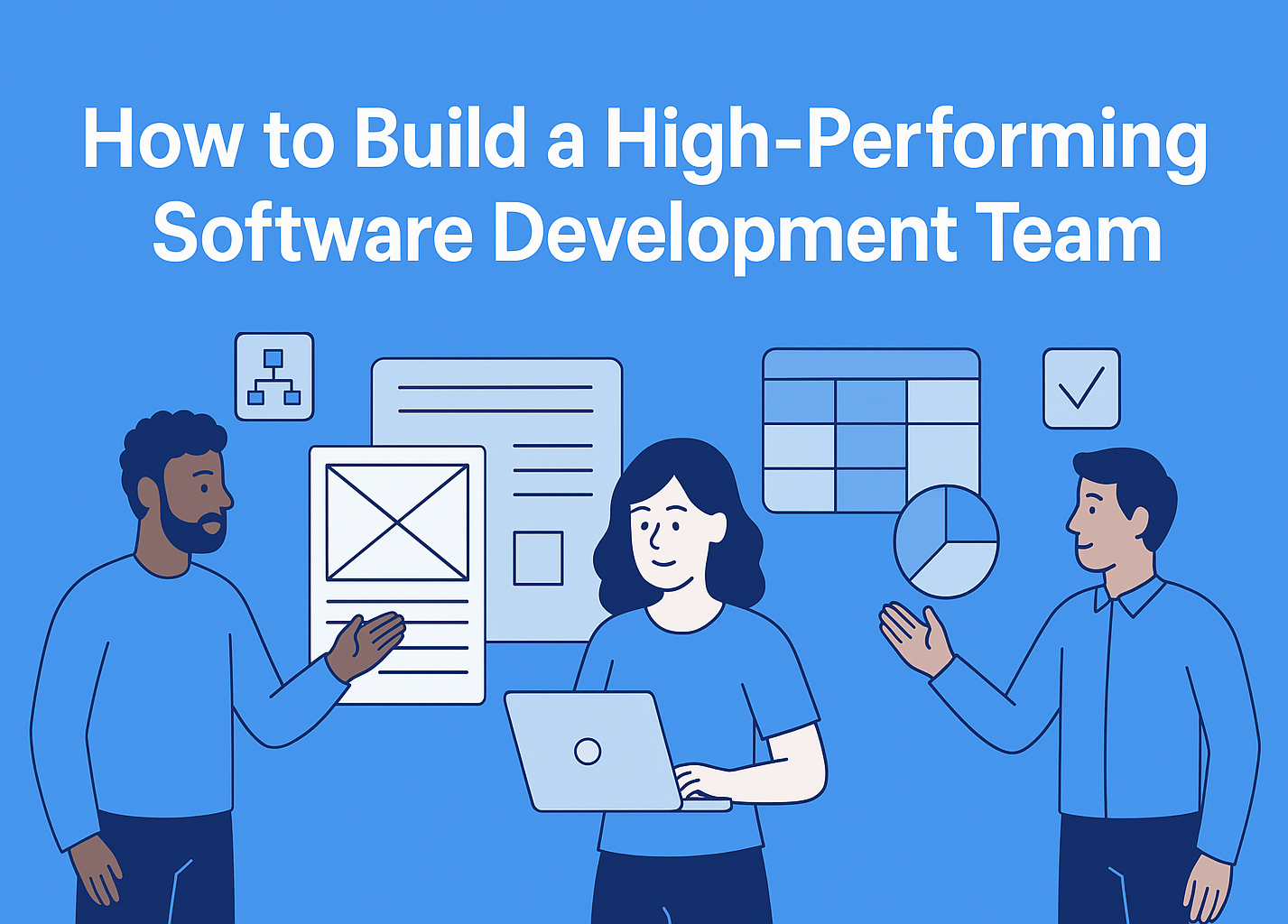· Software Development · 3 min read
How to Build a High-Performing Software Development Team
Building a high-performing software team requires more than just hiring skilled developers. Learn what it takes to create a culture of collaboration, trust, and technical excellence.

Introduction – Why High-Performing Teams Matter
In software development, the difference between a mediocre team and a high-performing one is not just about coding skills. It’s about how people collaborate, solve problems, and deliver value—together.
A great product isn’t just built with clean code. It’s built by a team that shares vision, communicates effectively, and moves fast without breaking quality.
So how do you build such a team? Let’s break it down.
1. Hire for Collaboration, Not Just Skill
Technical talent is essential, but soft skills often define team success. Look for:
- Strong communication abilities
- A growth mindset and willingness to learn
- Experience working in collaborative environments
- Empathy and team-oriented thinking
A team of solo experts will always lose to a team of aligned collaborators.
2. Define Clear Roles and Responsibilities
High-performing teams avoid chaos by ensuring everyone knows what they’re responsible for.
- Define roles early: frontend, backend, DevOps, QA, product.
- Avoid overlap and confusion—clarity leads to autonomy.
- Use frameworks like RACI to define who is Responsible, Accountable, Consulted, and Informed.
When people know where they fit, they move with confidence.
3. Create a Culture of Psychological Safety
Psychological safety—the belief that you won’t be punished for making mistakes—is a cornerstone of innovation.
- Encourage honest feedback and open communication.
- Celebrate learning moments, not just successes.
- Avoid blame culture. Focus on systems, not individuals.
When developers feel safe to speak up, the team improves together.
4. Foster Continuous Learning and Improvement
Technology evolves fast—so should your team.
- Offer learning budgets, courses, and mentoring.
- Conduct regular retrospectives to reflect and improve.
- Embrace experimentation and allow for failure.
Growth shouldn’t be optional. It should be part of your team’s identity.
5. Align on Clear Goals and Vision
A high-performing team works with purpose. Make sure:
- Everyone knows the product vision and business goals.
- Sprint and quarterly goals are visible and realistic.
- Decisions are guided by impact, not just effort.
This alignment turns daily work into meaningful progress.
6. Use the Right Tools to Support the Process
Even the best teams fail if their workflows are broken. Choose tools that:
- Enable transparent task tracking and team visibility
- Support async and real-time collaboration
- Integrate with your codebase, CI/CD, and documentation
TaskFrame is one such tool. Designed specifically for software teams, it connects planning and execution by linking tasks directly to UI wireframes. This ensures that everyone—from devs to PMs—knows what needs to be done, and why.
While traditional tools like Jira or Trello focus on ticket management, TaskFrame provides a visual-first, task-driven system, reducing miscommunication and speeding up delivery.
7. Track Performance Without Micromanagement
Measuring progress is important—but metrics shouldn’t create pressure.
- Track velocity, bug rate, and deployment frequency
- Focus on team-level improvements, not individual tracking
- Use metrics to guide discussions, not control behavior
Trust builds performance. Micromanagement breaks it.
8. Prioritize Communication and Feedback Loops
Regular and clear communication is non-negotiable.
- Use daily standups, demos, and retrospectives.
- Document decisions and share updates async.
- Give and request feedback regularly.
Great teams don’t guess—they talk, listen, and adapt.
9. Support Autonomy and Accountability
Empower your team to make decisions, but ensure ownership.
- Let devs take full ownership of features or services.
- Avoid decision bottlenecks—trust your experts.
- Balance autonomy with accountability and support.
High performance thrives when trust and responsibility go hand in hand.
10. Stay Lean, But Don’t Rush
Speed matters, but not at the cost of quality or burnout.
- Focus on delivering value, not just output.
- Reduce scope when needed—don’t overload your team.
- Build a sustainable pace that enables long-term growth.
Quality, alignment, and trust are what create real velocity.
Conclusion – Great Teams Are Designed, Not Assembled
Building a high-performing software development team takes more than hiring talented engineers. It’s about intentional leadership, clear communication, psychological safety, and the right tools.
If you want a team that ships quality code consistently, works collaboratively, and scales with confidence—build the environment where that’s possible.
Ready to take your team to the next level? Try TaskFrame and experience task management built for software teams.



